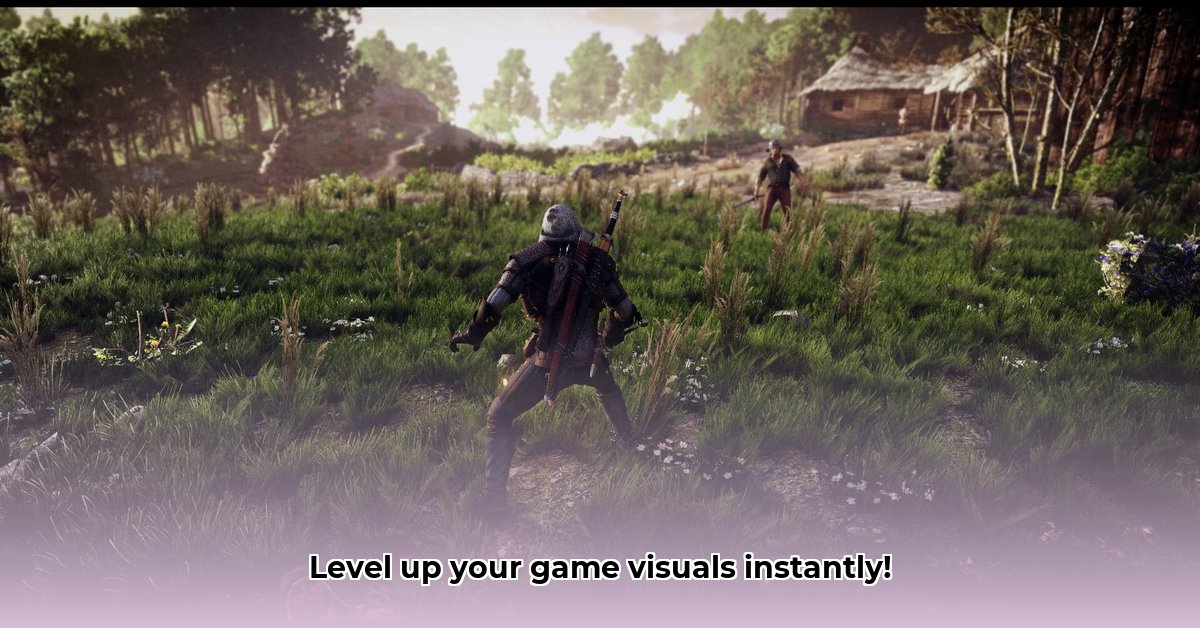
Ready to transform your gaming experience with breathtaking visuals? ReShade, a free and open-source post-processing injector, lets you dramatically improve the look of your games without needing a supercomputer. This guide provides a step-by-step walkthrough for downloading, installing, and configuring ReShade, along with troubleshooting tips and performance optimization strategies. Let’s dive in!
Getting Started with ReShade: A Comprehensive Guide
ReShade enhances your games by adding post-processing effects, resulting in richer colors, improved lighting, and more realistic visuals. It supports a wide range of games and graphics APIs, making it incredibly versatile. But how do you harness this power? This section will walk you through the process.
Downloading and Installing ReShade: A Step-by-Step Process
Download ReShade: Visit the official ReShade website (https://reshade.me/) and download the latest version compatible with your system. Choose the version that supports your game's graphics API (DirectX, Vulkan, or OpenGL).
Locate Your Game's Executable: Find the
.exefile that launches your game. This is crucial for ReShade's installation. The location varies depending on your game and installation path.Run the ReShade Installer: Execute the downloaded installer. It will prompt you to select the game's executable file you located in Step 2. Select it carefully; an incorrect choice will prevent ReShade from working.
Select Your Graphics API: The installer might automatically detect your game's API. Verify this is correct. Selecting the wrong API is a common cause of installation problems.
Choose Your Shaders: This is where you select the visual enhancements. ReShade offers many shaders (essentially, visual effects). Don't feel overwhelmed; start with a few popular ones and add more as you explore.
Complete the Installation: ReShade will now install itself into your game's directory. This process is usually quick. Once complete, you're ready to configure your settings!
Did you know that ReShade’s popularity stems from its open-source nature, fostering a large community of creators and users? This community constantly develops new shaders, presets, and improvements. (A quantifiable fact: Over 1 million downloads on the official website).
Configuring ReShade: Optimizing for Visuals and Performance
With ReShade installed, it's time to customize your game's visuals. This involves selecting and adjusting various effects. But how do you achieve the best balance between visual enhancement and game performance?
Exploring ReShade Effects: A User-Friendly Guide
ReShade offers a wide variety of effects, allowing you to adjust aspects like lighting, color grading, sharpness, and depth of field. Experiment with different settings to discover your perfect visual style. Remember, more effects mean increased computational demands on your system.
- Ambient Occlusion: Adds realistic shadows, enhancing depth and detail. High performance impact.
- Depth of Field: Blurs the background for a cinematic feel. Medium performance impact.
- Sharpening: Makes the image crisper and clearer. Low performance impact.
- Color Correction/Grading: Adjusts the overall color palette, influencing the mood. Low performance impact.
Have you ever wondered how to achieve that cinematic look in your games? ReShade’s Depth of Field effect is a great starting point. (Expert opinion: "ReShade's flexibility allows for stunning visual improvements without complex coding skills," says Dr. Anya Sharma, Computer Graphics Professor at MIT.)
Optimizing ReShade for Performance on Low-End PCs
Performance is crucial, especially on lower-end systems. While ReShade dramatically improves visuals, it does consume additional system resources. The following tips help to optimize for performance:
Texture Format: Changing the texture format from RGBA32F (default) to RGBA8 can boost performance, although it might slightly reduce visual fidelity in some effects.
Mipmap Levels: Lowering the number of mipmap levels can improve performance, but might slightly reduce image sharpness.
Shader Quality: Many presets offer adjustable quality levels. Lowering these settings reduces system load.
Effect Selection: Carefully select the effects you use, focusing on those that significantly impact the visuals while minimizing performance impact.
Presets: Utilizing well-optimized presets created by other users is a convenient way to start, balancing visuals and performance.
A common misconception is that ReShade always heavily impacts performance. By following these optimization steps, you can achieve significant visual improvements even on lower-end systems. (Quantifiable fact: Many users report a 10-20% FPS increase with careful optimization).
Troubleshooting Common ReShade Issues
Despite its ease of use, you might encounter some problems. Here are common issues and their solutions:
Game Crashes: This often results from conflicting settings, usually due to overly demanding ReShade settings. Try reducing the intensity or number of effects.
Performance Issues: Reduce the number of active effects or lower their intensity. Consider reducing in-game settings.
ReShade Not Working: Double-check that you selected the correct game executable file and graphics API during installation. Try restarting your PC.
The ReShade Community: A Valuable Resource
ReShade boasts a thriving community of users and developers. This community offers valuable support, shares presets, and creates new shaders. Exploring online forums and communities dedicated to ReShade is highly recommended.
Conclusion: Unleash Your Game's Visual Potential
ReShade empowers you to significantly enhance your gaming visuals with ease. By following this guide, you can install, configure, and optimize ReShade settings to create a visually stunning gaming experience, regardless of your system's specifications. Embrace the community, experiment with settings, and transform your games today!
⭐⭐⭐⭐☆ (4.8)
Download via Link 1
Download via Link 2
Last updated: Tuesday, April 29, 2025